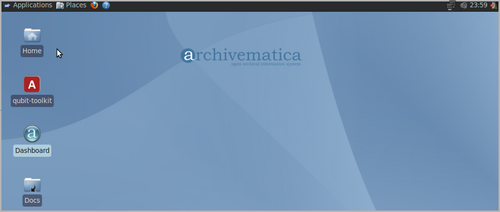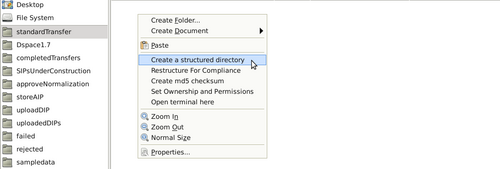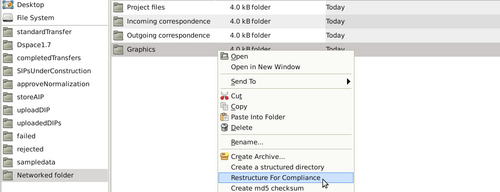UM transfer
Main Page > Documentation > User Manual > Transfer
General description
During transfer, digital objects are moved into Archivematica and run through several micro-services: UUID assignment; checksum verification (if checksums are present); package extraction (i.e. unzipping of zipped or otherwise packaged files); virus checking; format identification and validation; and metadata extraction.
At the end of transfer, the user can select a number of ways to create one or more SIPs from the transfer. Once this is done, the SIP(s) are moved into ingest.
Create a transfer
- Open the file browser by clicking on the Home folder on the Archivematica desktop.
Option 1
- Navigate to the standardTransfer directory by using the shortcut on the left panel of the file manager.
- Right-click and select "Create a structured directory"
- The structured directory will contain three subdirectories: logs, metadata, objects. Copy the digital files to be preserved into the /objects directory. Note that you can create subdirectories within /objects if desired.
Option 2
- Navigate to a directory of files to be preserved that has not been created using the right-click script in option 1, above.
- Right-click the directory and select "Restructure for compliance". This will create the subdirectories required to transfer the files into Archivematica: logs, metadata, objects.
- Copy and paste the directory to standardTransfer using the shortcut on the left panel of the file manager.
Add submission documentation
In the transfer, navigate to the /metadata/submissionDocumentation folder and add files if desired. These files could be donor agreements, transfer forms, copyright agreements, and/or any correspondence or other documentation relating to the transfer. Any SIPs subsequently made from this transfer will automatically contain copies of this documentation.


